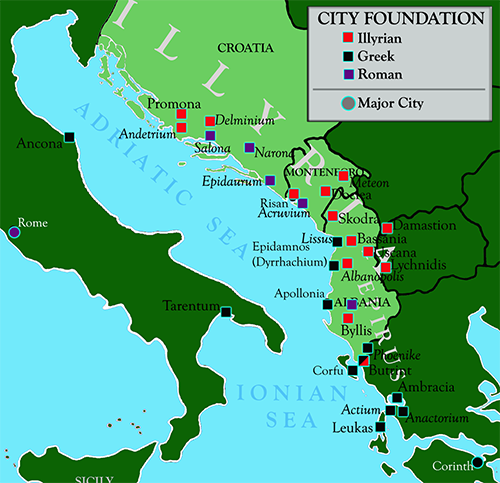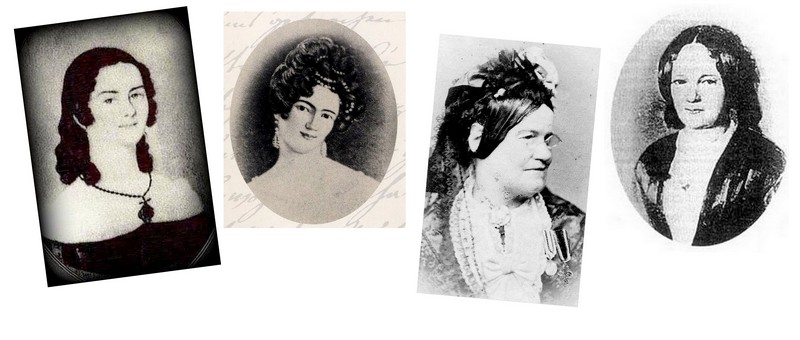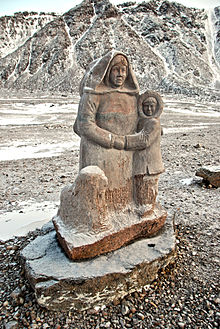Ancient Illyria covered the same space as modern Albania. Or modern Bosnia-Hezergovinia. Or modern Serbia. Or modern Croatia. Or modern Montenegro. Historians really can't agree. No matter where they may have lived, the Illyrians were a fierce nation of seafarers, with a penchant for piracy. The pillaged all around the Adriatic, making themselves rich off of the goods of trading ships. They were a wealthy nation, and in the early 200 BCE's, they were still holding strong, despite the rise of the land hungry Roman Republic.
Teuta was the second wife of king Agron. Agron was your typical ancient king. He liked pillaging, booze, and sex. And after a particularly successful raid, he engaged in all three so enthusiastically that it lead to his demise, leaving Teuta to serve as regent for their young son, Pinnes.
Impossibly enough, Teuta liked pillaging even more than her dead husband. One of her first acts upon being appointed regent was to give out letters of marque to the majority of the ships in her navy, authorizing them to pillage whoever they wanted, so long as they paid their tax.
In Illyria, piracy was just as much an industry as fishing. It was an acceptable career, and the Illyrians didn't see anything wrong with it. Teuta encouraged it among her people, and told them to attack everyone and anyone. Not only did piracy bring in money to the Illyrians, but it also brought in new lands and cities, because the Illyrians weren't content to just steal things, they also had to conquer lands.
Teuta was known to have led some of these raids herself, and for several years the Illyrians were the scourge of the Adriatic. No one could stop them, until someone snitched to Rome.
The Roman Republic was about 250 years old, and going pretty strong. The senate was dedicated to protecting the financial interests of Roman citizens, so when reports of Illyrians indiscriminately attacking their ships reached Rome, the senate sent out two ambassadors--the Coruncanius brothers--to try and broker a peace with Teuta.
Unfortunately for all involved, one of those ambassadors, Lucius, wasn't very good at being an ambassador. Lucius and Gaius approached Teuta when she was in the middle of a seige, pulling her away from the thick of the fight. When they presented their argument she was obviously distracted, and when they finished speaking she told them that she and her government couldn't regulate the actions of private citizens. This is when Lucius lost it.
There's no account of exactly what Lucius said to Teuta, historians just record it as 'plain speech'. However, the gist of what he told her was that Illyria should change its customs to suit the needs of Rome. Bad move.
When the brothers were on a ship back to Rome Lucius was killed by an assassin that is widely believed to have been sent by Teuta. Killing an ambassador is a major no-no, so when word reached Rome, the Romans retaliated brutally, sending 200 ships and 20,000 infantrymen to suppress the Illyrians.
Teuta held her own for a very long time against the Romans, and would have been able to beat them back, if not for the treachery of Demetrius. Demetrius was a high ranking Illyrian with designs on the throne. He sold out the Illyrians to the Romans, and Teuta was forced to surrender, and ceed Illyria to the Romans.
Today Teuta is remembered most often as a Pirate Queen. She's on the back of Albanian currency, and she's claimed as a national hero by the Albanians. Teuta was known in her day for being fierce and indomitable, to the point that following her peace treaty with Rome she was no longer allowed to sail out of her harbor with more than two unarmed ships. Despite not knowing much about Teuta before or after this incident with Rome, there is no doubt that she was a strong, fearless woman.
Sources
Queen Teuta and Rome
Teuta-The Pirate Queen of Illyria
Lady Pirates-Queen of the Illyrians
The Fierce Queen of the Illyrians: Teuta the Untameable
Ancient Piracy and Teuta: The Illyrian Pirate Queen
Queen Teuta
 |
| A reasonable guess as to where Illyria may have been. |
Impossibly enough, Teuta liked pillaging even more than her dead husband. One of her first acts upon being appointed regent was to give out letters of marque to the majority of the ships in her navy, authorizing them to pillage whoever they wanted, so long as they paid their tax.
In Illyria, piracy was just as much an industry as fishing. It was an acceptable career, and the Illyrians didn't see anything wrong with it. Teuta encouraged it among her people, and told them to attack everyone and anyone. Not only did piracy bring in money to the Illyrians, but it also brought in new lands and cities, because the Illyrians weren't content to just steal things, they also had to conquer lands.
Teuta was known to have led some of these raids herself, and for several years the Illyrians were the scourge of the Adriatic. No one could stop them, until someone snitched to Rome.
 |
| Teuta |
Unfortunately for all involved, one of those ambassadors, Lucius, wasn't very good at being an ambassador. Lucius and Gaius approached Teuta when she was in the middle of a seige, pulling her away from the thick of the fight. When they presented their argument she was obviously distracted, and when they finished speaking she told them that she and her government couldn't regulate the actions of private citizens. This is when Lucius lost it.
There's no account of exactly what Lucius said to Teuta, historians just record it as 'plain speech'. However, the gist of what he told her was that Illyria should change its customs to suit the needs of Rome. Bad move.
When the brothers were on a ship back to Rome Lucius was killed by an assassin that is widely believed to have been sent by Teuta. Killing an ambassador is a major no-no, so when word reached Rome, the Romans retaliated brutally, sending 200 ships and 20,000 infantrymen to suppress the Illyrians.
 |
| Teuta on Albanian currency. |
Today Teuta is remembered most often as a Pirate Queen. She's on the back of Albanian currency, and she's claimed as a national hero by the Albanians. Teuta was known in her day for being fierce and indomitable, to the point that following her peace treaty with Rome she was no longer allowed to sail out of her harbor with more than two unarmed ships. Despite not knowing much about Teuta before or after this incident with Rome, there is no doubt that she was a strong, fearless woman.
Queen Teuta and Rome
Teuta-The Pirate Queen of Illyria
Lady Pirates-Queen of the Illyrians
The Fierce Queen of the Illyrians: Teuta the Untameable
Ancient Piracy and Teuta: The Illyrian Pirate Queen
Queen Teuta











